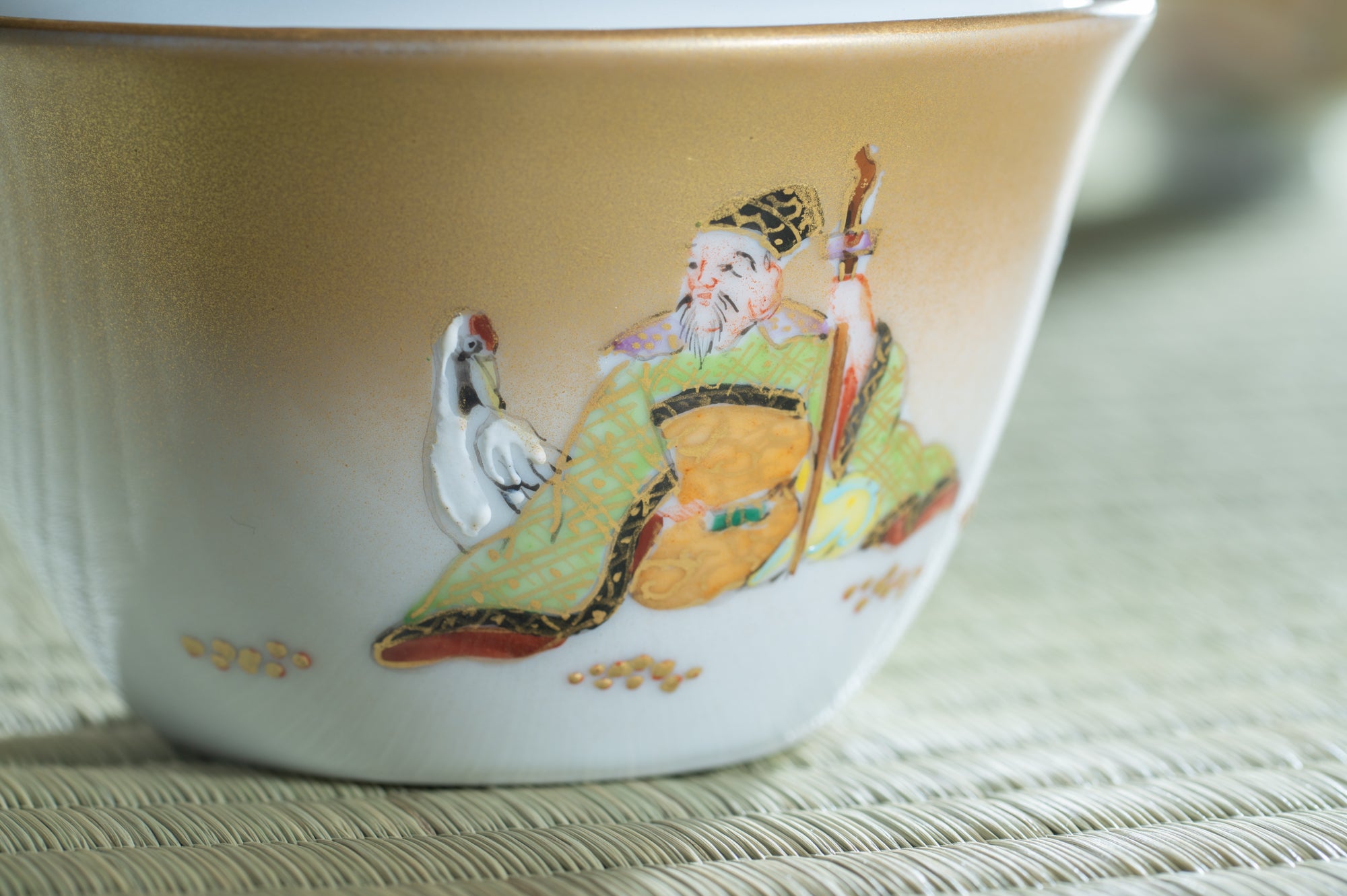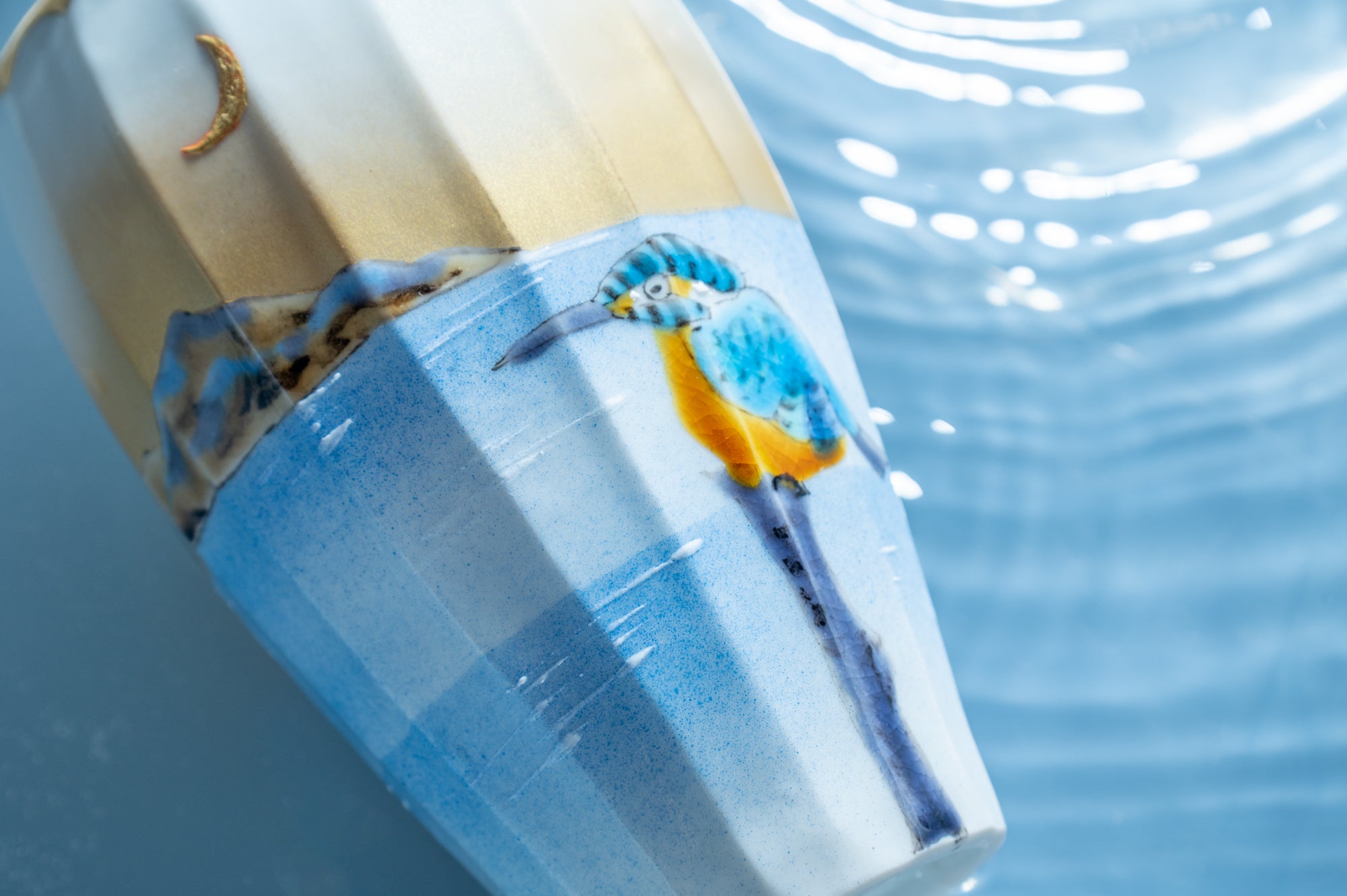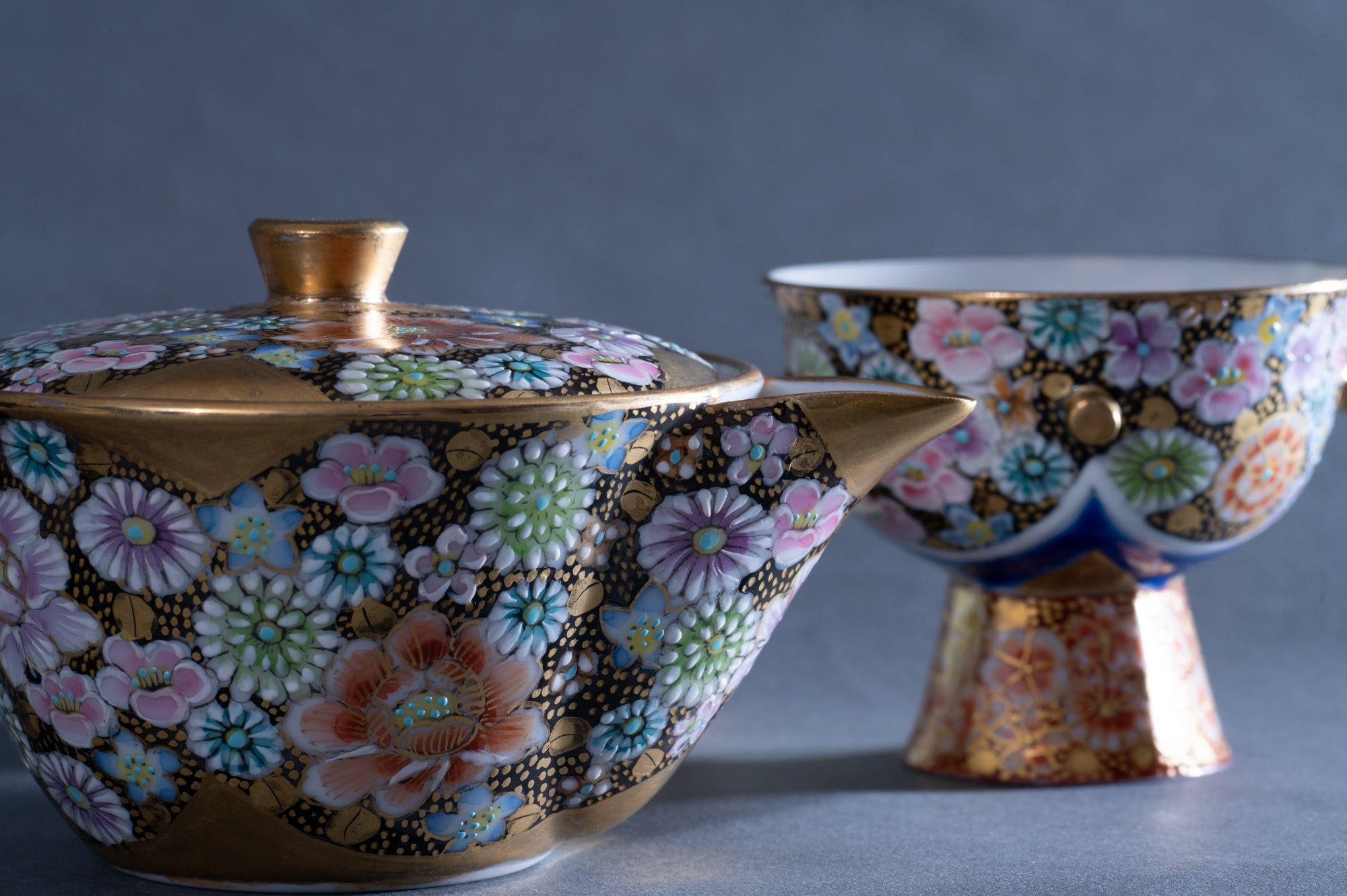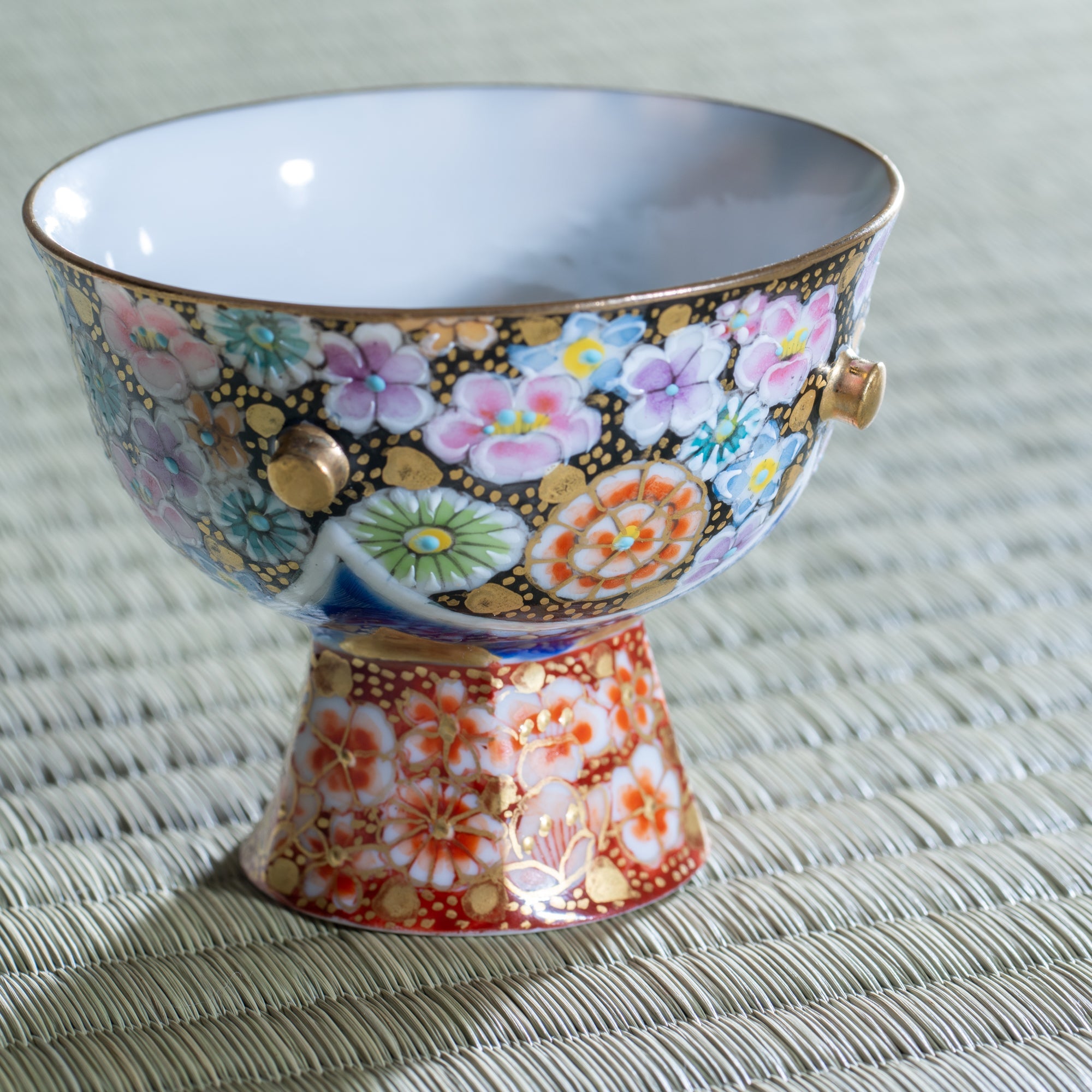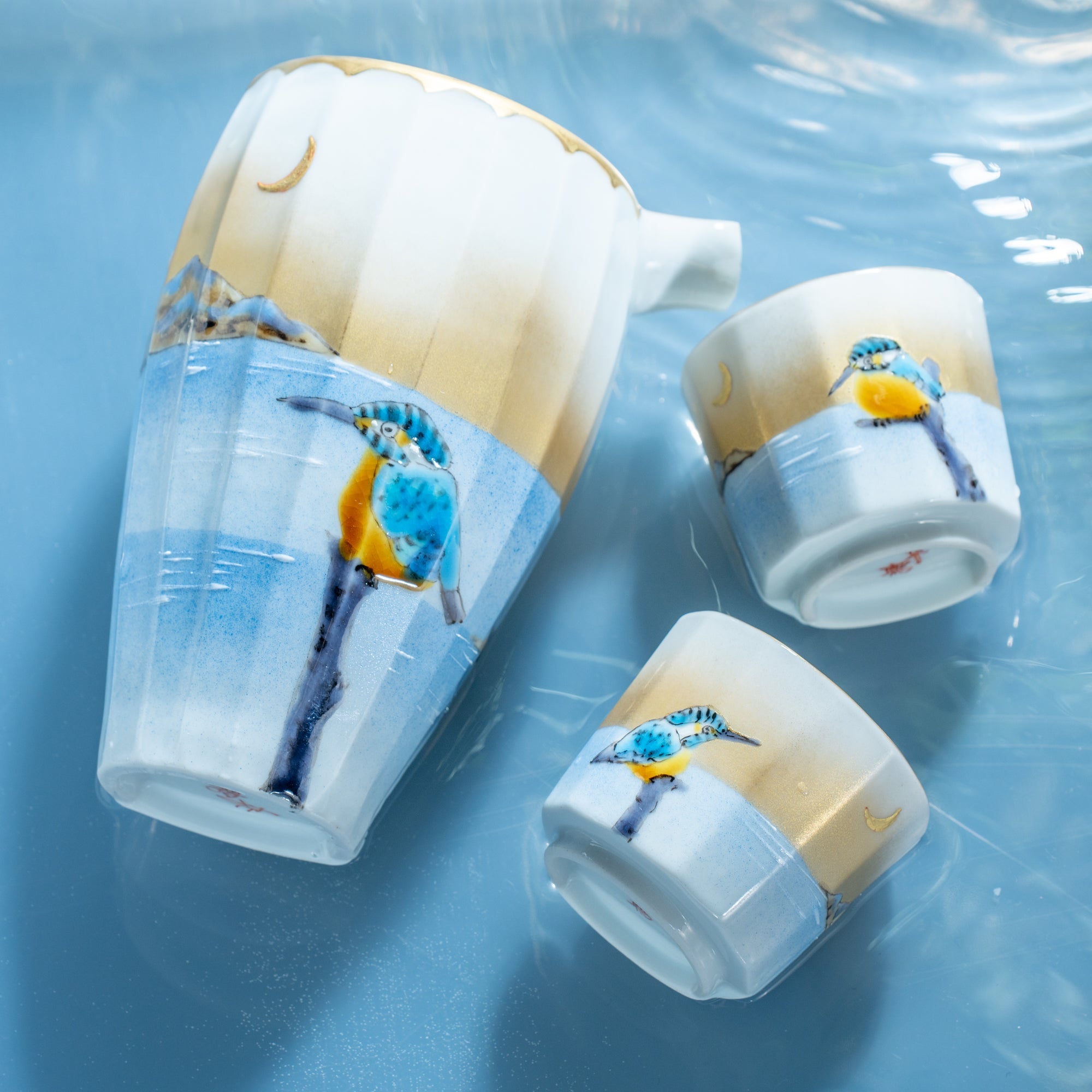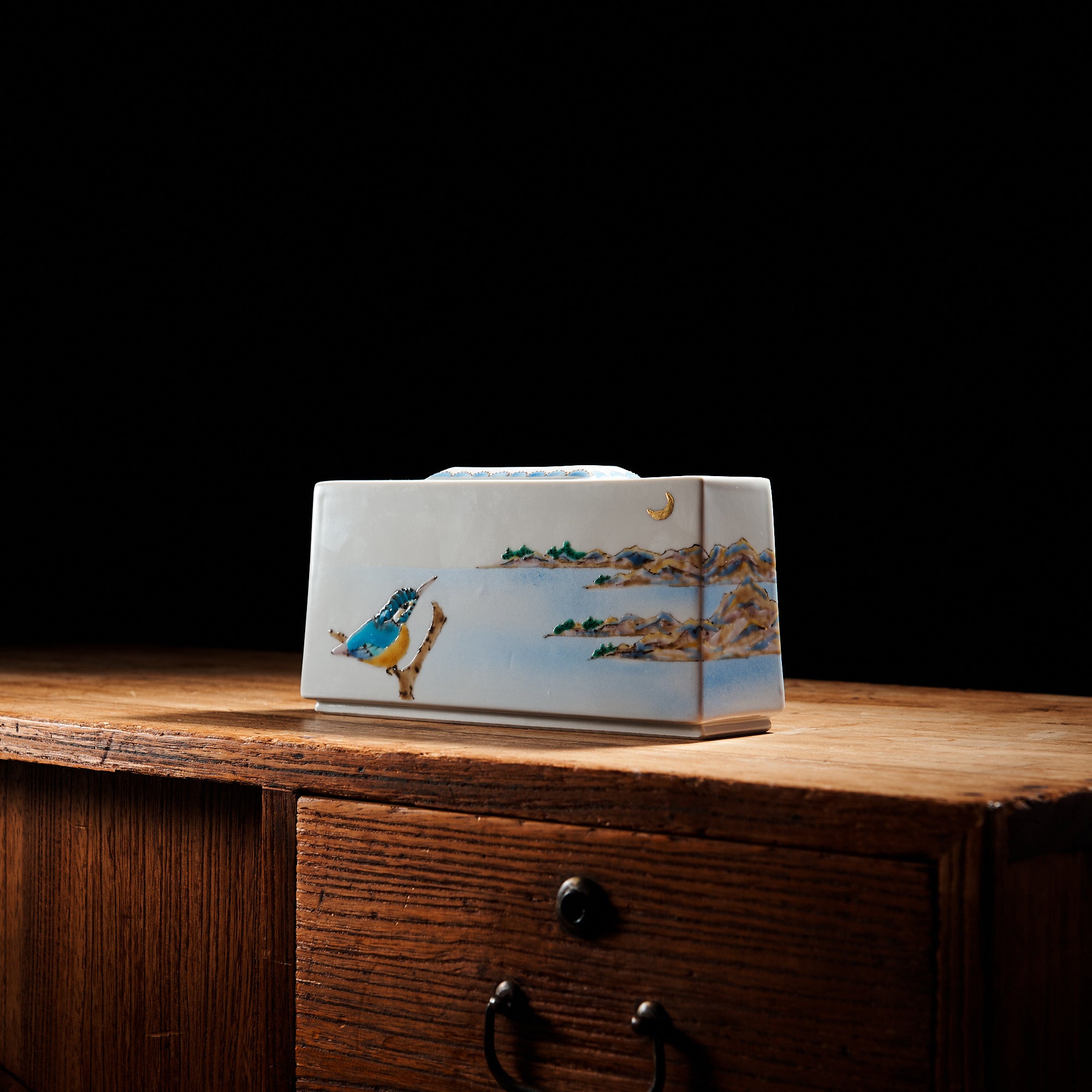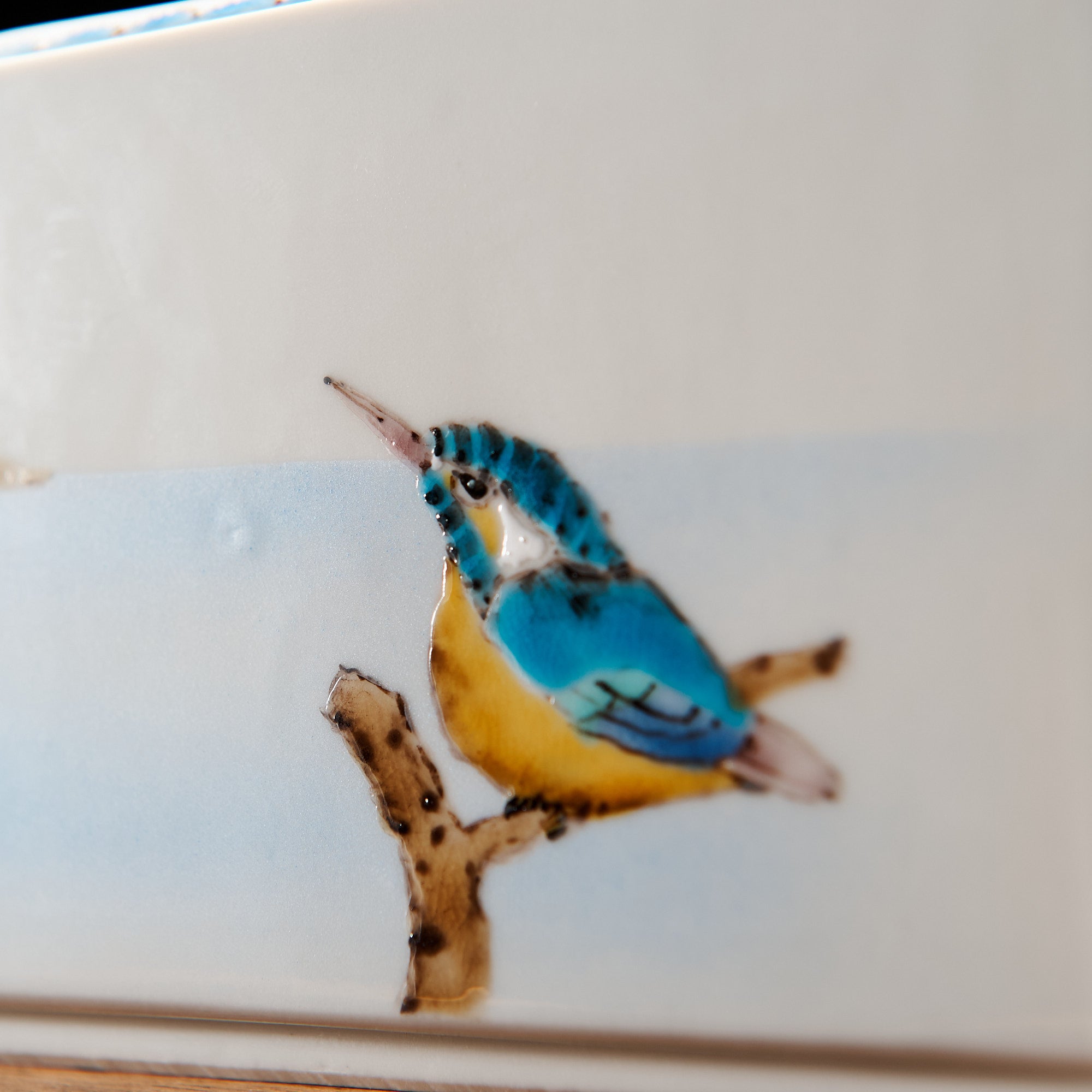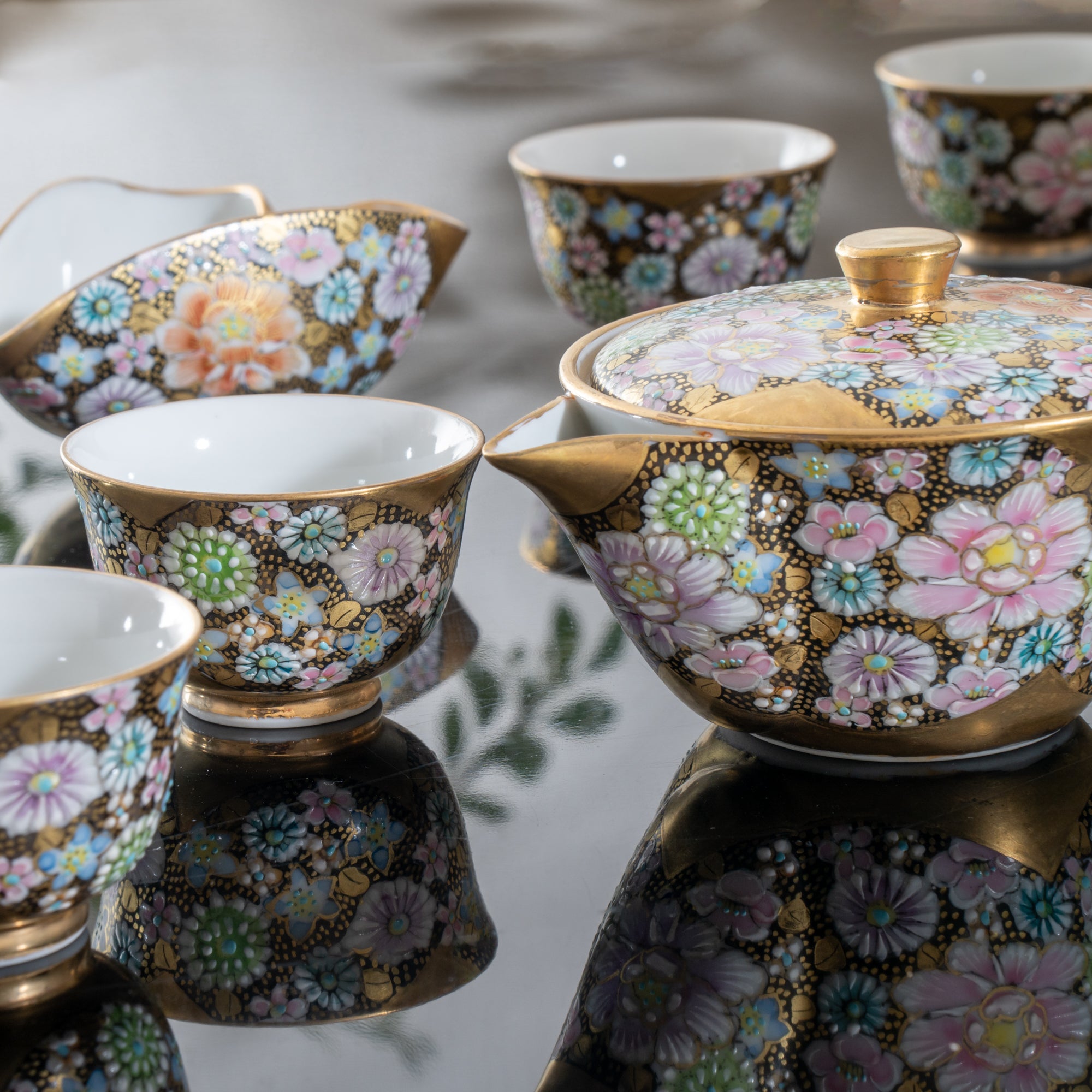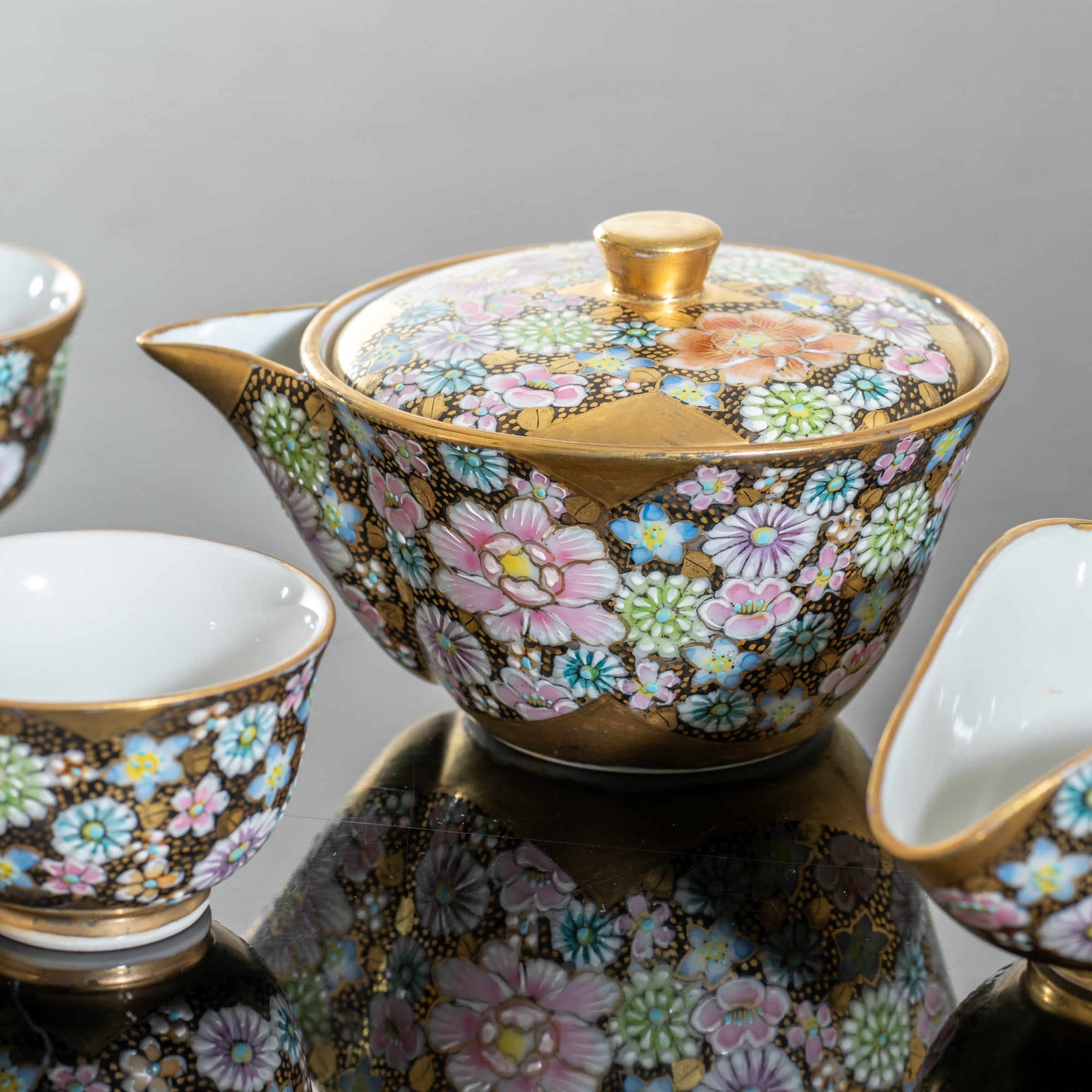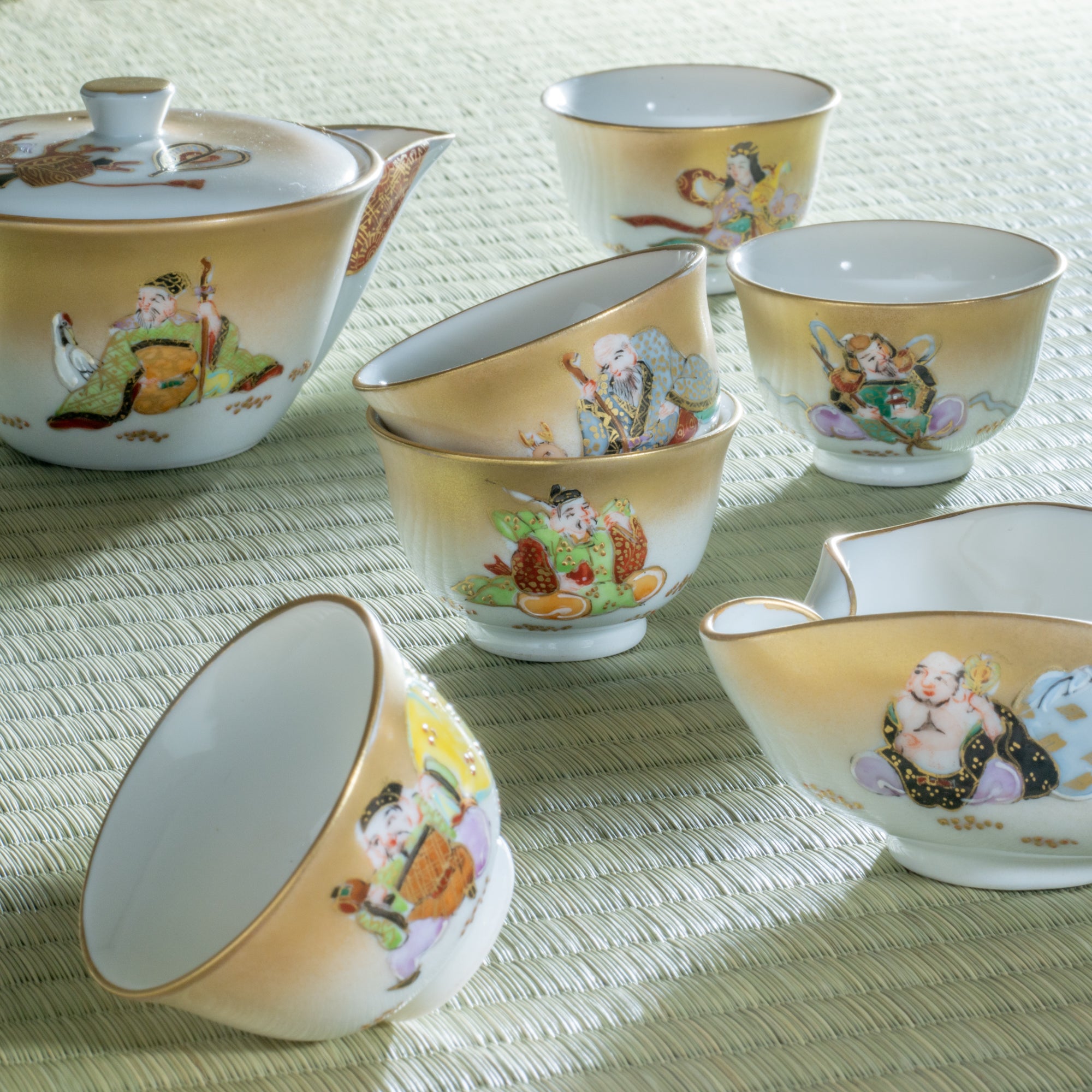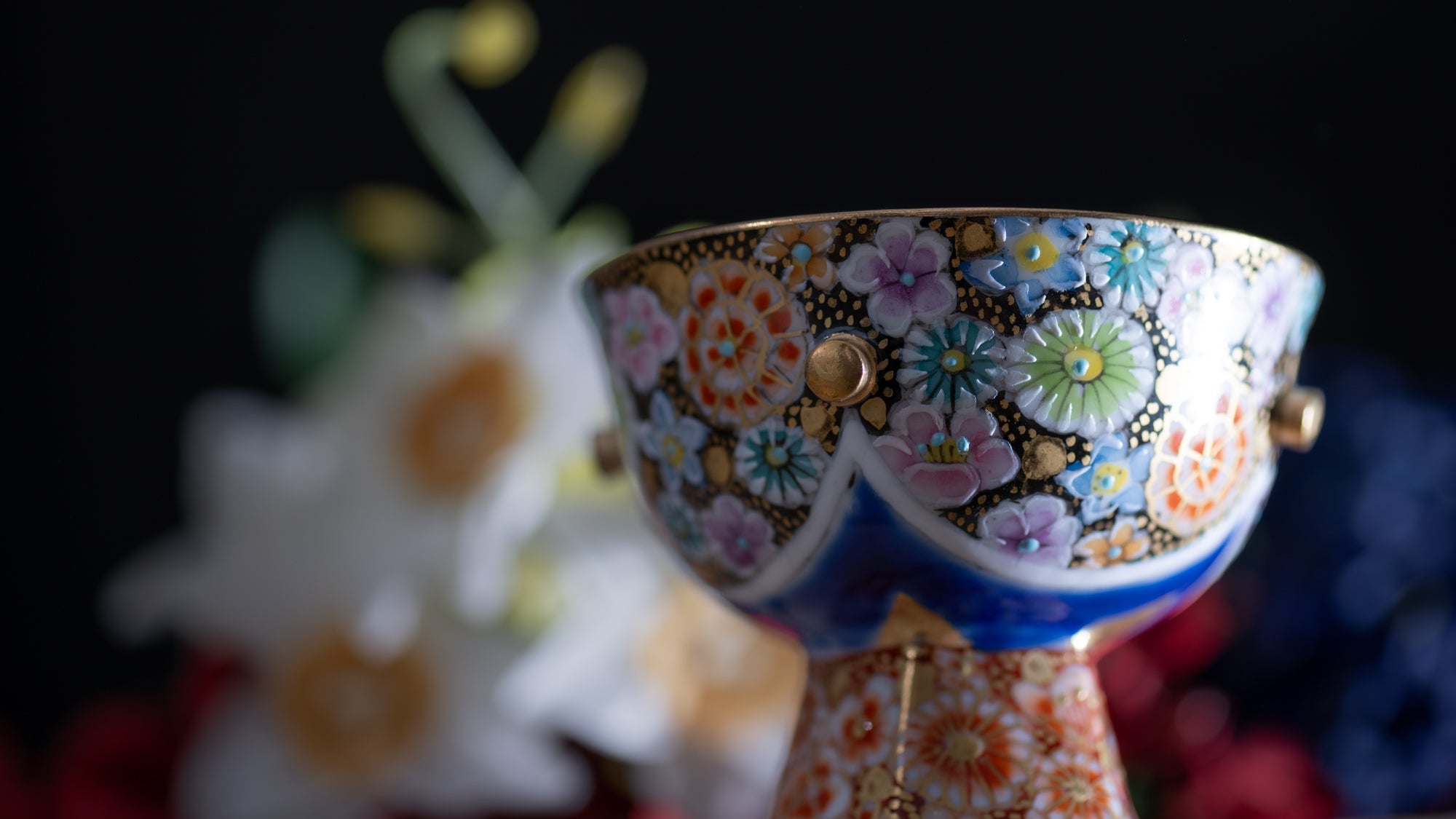
The Sublime Elegance of Heritage
Taka Toshifumi
Taka Toshifumi's works, while preserving and inheriting the classic artistry of Kutani ware such as the Shoza style, kinsai, and hanazume, also emphasize the importance of integrating personal creativity. His pieces not only embody the cultural richness and depth of traditional craftsmanship but also captivate with the allure brought about by continuous innovation and exploration.
The Art of Vibrancy: Shoza Style
Originating in the Meiji period (1868 CE–1912 CE), the Shoza style represents a pinnacle of 19th-century Japanese porcelain art, celebrated for its vibrant colors, elaborate designs and magnificent gold embellishments.
In contemporary practice, Taka retains the classic motifs of the Shoza style in the central portions of his works but incorporates his own designs around these elements. He carefully balances traditional lavishness with modern sensibilities, mindful of creating visual harmony and avoiding overwhelming intensity for today’s viewers.
This thoughtful integration of historical and contemporary aesthetics ensures that the Shoza style continues to enchant and resonate in the modern era.
Kinsai
In addition to the Shoza style, Taka's works also feature the kinsai technique and hanazume design.
Kinsai, known for its luxurious use of gold, epitomizes opulence in Kutani ware. This decorative technique involves applying gold leaf or gold paste to create intricate patterns and highlights. Originating as a distinguishing feature of Kutani ceramics, kinsai showcases a mastery of gilding that adds a rich, gleaming dimension to the porcelain.
The process is meticulous and labor-intensive, starting with the application of gold leaf, which is carefully positioned and then fixed with an overglaze. The resulting effect is a striking contrast between the lustrous gold and the vivid Kutani gosai "five colors."
Hanazume
Hanazume, translating to "filled with flowers," is characterized by a densely packed floral design, often outlined or highlighted with gold. Created around 1913, this design involves meticulously arranging a profusion of detailed flowers to cover nearly the entire surface, offering an all-encompassing decorative approach.
However, compared to the traditional dark, rich colors of hanazume, Taka prefers using pastels and stylizes the design, avoiding realism in his drawings.
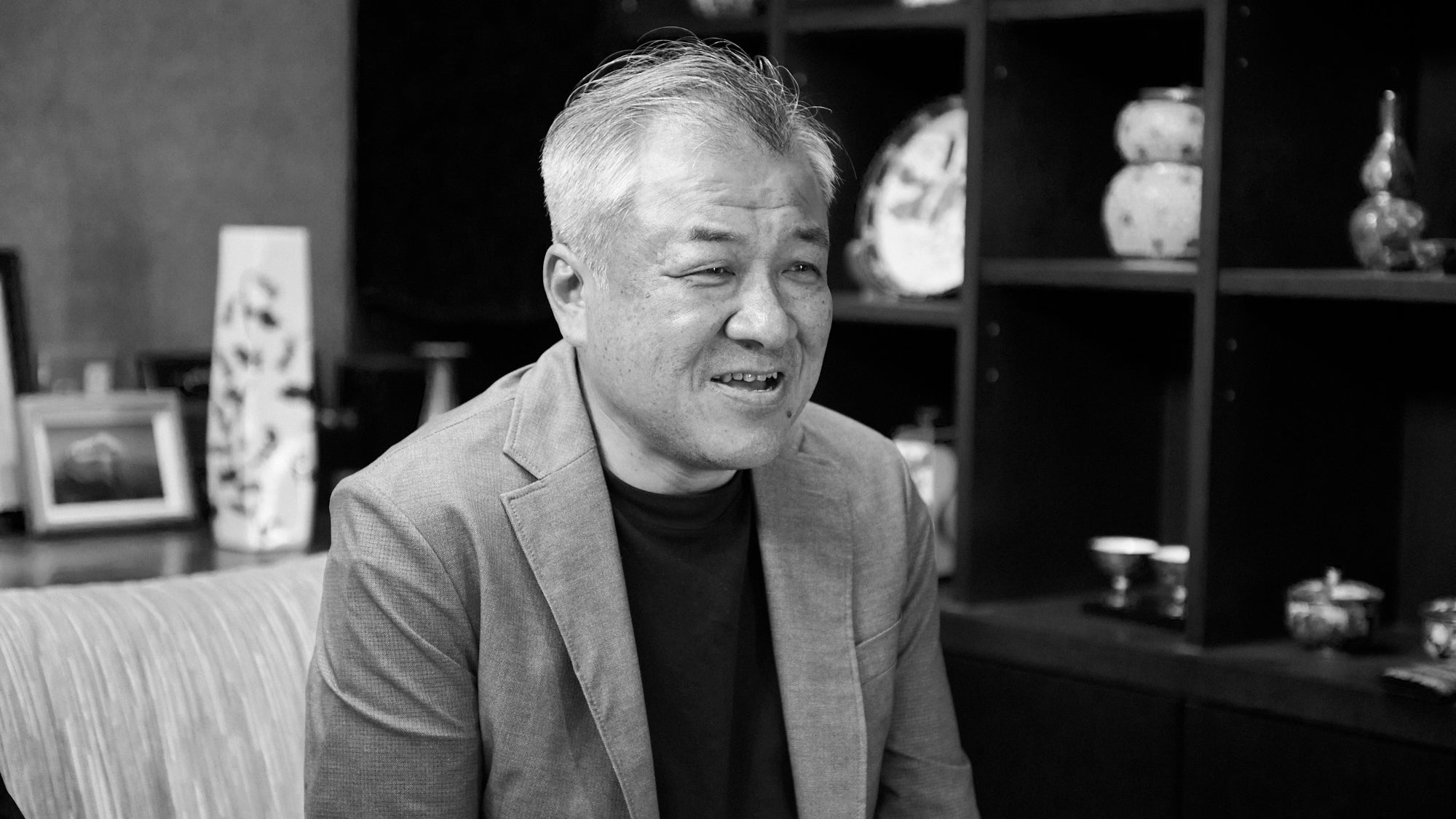
Biography
Taka Toshifumi, born in 1965, is a renowned Japanese craftsman specializing in Kutani ware. He studied molding techniques at Osaka University of Arts and received comprehensive ceramic arts training at the Kutani Ceramic Technical Training Institute, where he both inherited and innovated his family's Kutani ware techniques.
He not only preserves his family's traditional methods but also continually innovates, keeping Kutani ware vibrant and unique in modern art.
Taka’s work is celebrated for its exquisite craftsmanship and unique use of color. He excels in depicting flowers, birds, people and various patterns, using soft colors and delicate brushwork to express the distinctive elegance of Kutani ware. His creations have been selected for prestigious exhibitions. He has also held solo exhibitions in cities like Vienna, Guangzhou and Dubai.


